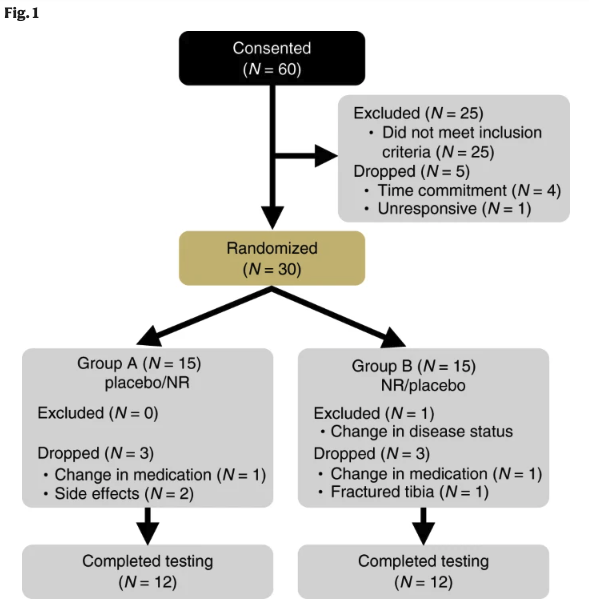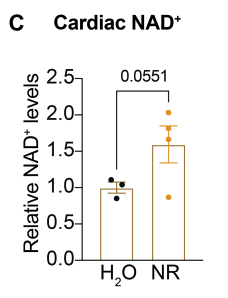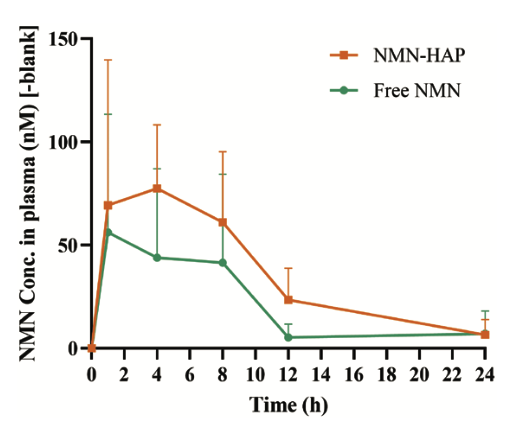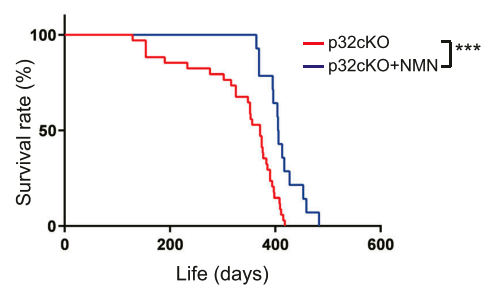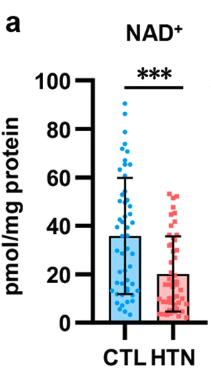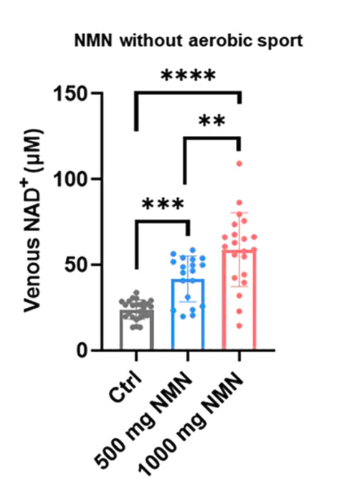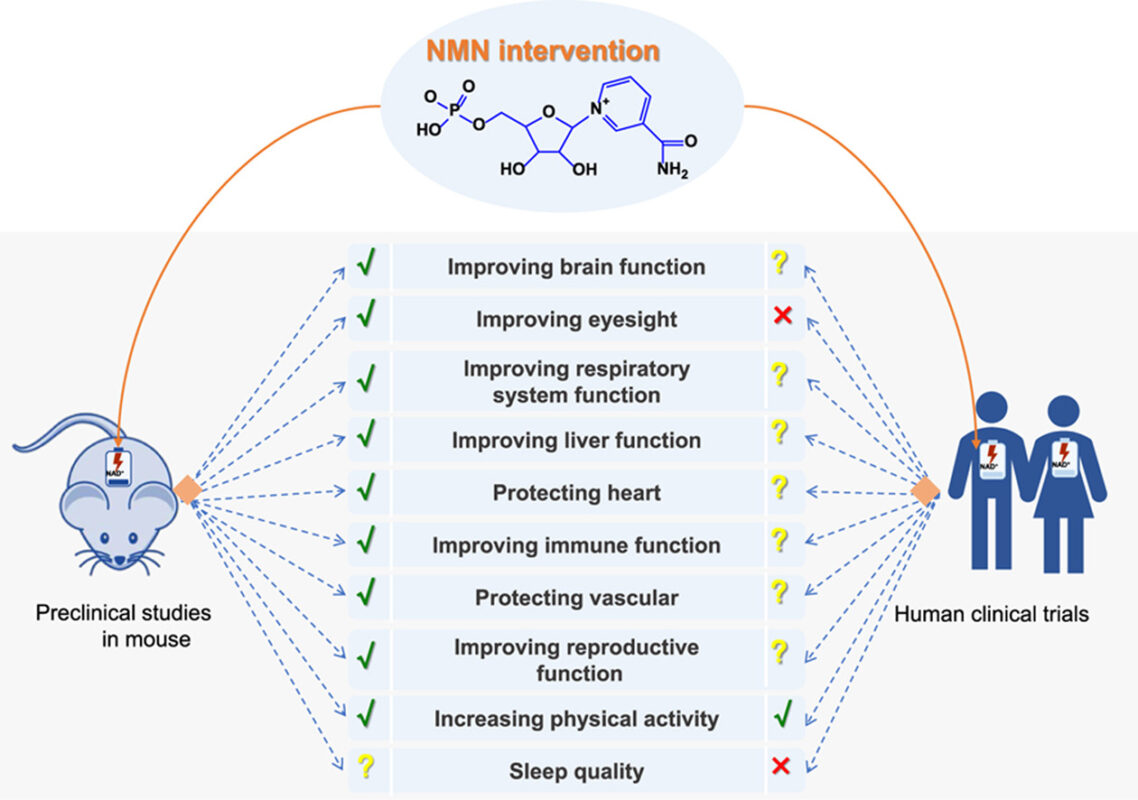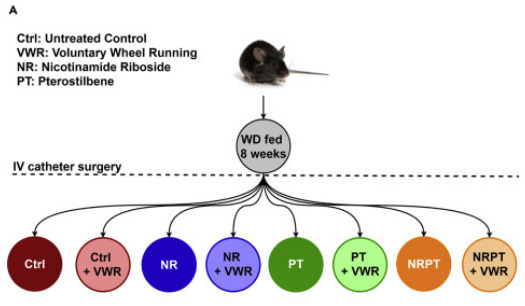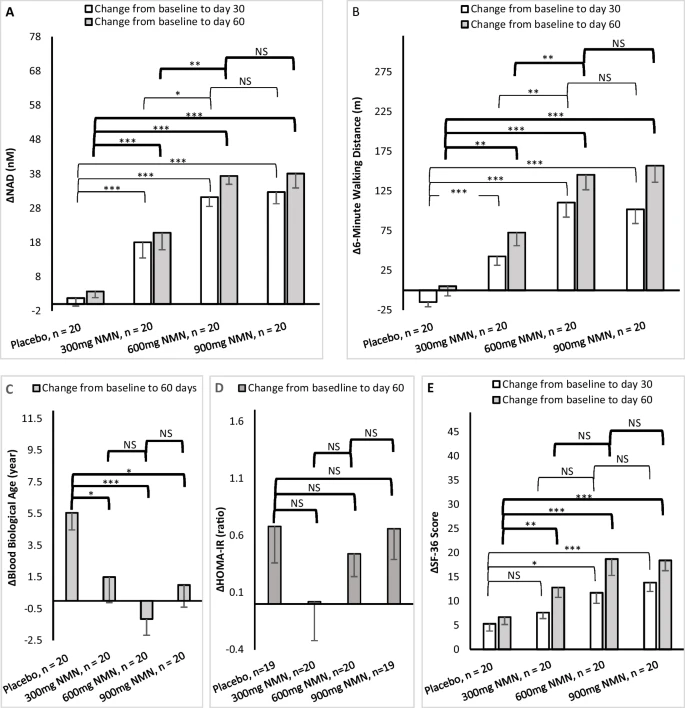A recent systematic review evaluated ten studies with NAD+ precursors for efficacy and safety.
Tag Archives: nad
Many diseases and biological stressors disrupt NAD+ metabolism and are associated with low levels of NAD+, such as obesity, infection, alcohol consumption, and high blood pressure.
Circadian rhythm is your body’s internal clock that permits anticipation of daily patterns, regulating when it’s time to sleep, wake up, eat, and digest. This study evaluated the effects of NR supplementation on age-related changes in the heart’s circadian rhythm.
“Upon oral administration, NMN–HAP nanoparticles demonstrated prolonged circulation time and enhanced bioavailability compared with free NMN, leading to elevated plasma levels of both NAD+ and its precursor, NR.”
“These results suggest that NMN treatment functionally ameliorated or prevented exacerbation of heart failure in p32 cardiomyocyte–specific knockout mice, thereby prolonging their lifespan.”
“Overall, the present study may shed new light on novel strategies in which NAD+ boosting therapy, including NMN supplement and CD38 inhibition, may turn out to be a promising therapeutic measure to treat patients with hypertension.”
This study revealed a new technique to quickly, accurately, and inexpensively test blood NAD+ levels in humans to allow repeated testing throughout the day in clinical settings, and eventually at home.
Using this method, they were able to identify 6 different combinations of molecules that can be used to “reset” the age of cells to a youthful, healthy state.
Resveratrol supplementation effectively protected mice against age-related muscle mass loss, heart cell enlargement, and motor dysfunction.
Quercetin, a bioactive compound found in various fruits and vegetables, has attracted significant attention for its potential therapeutic effects against allergies.
NR injections boosted NAD+ levels in skeletal muscle and white adipose tissue.
A ~140% increase in muscle NAD+ was observed after 7 days of IV administration of NR. Oral administration failed to increase NAD+ levels compared to the control group (figure A).
A new NMN human trial using 80 middle-aged healthy adults showed that NMN supplementation was both safe and well tolerated. It also showed that NMN significantly raised NAD+ blood levels, increased endurance, and benefited bioage. Study set out to determine safety and efficacy of NMN supplementation in 4 groups NAD+ levels are known to decline […]
Thus, circulating host NAM enters the gut lumen and is used by the microbiome for both NAD and NA synthesis.
Thus, gut microbiota provide an alternative route from NAM to NAD, bypassing the salvage synthesis pathway, in intestine and liver
Orally delivered NR was found in the GI tract but not in other peripheral tissues, indicating rapid metabolism of NR before it enters the circulation (Figure S4A). Only a small fraction of NAD in the liver and small intestine was M+9, indicating minimal direct assimilation of NR

